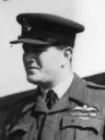German Anti-Aircraft Guns ~ Flak
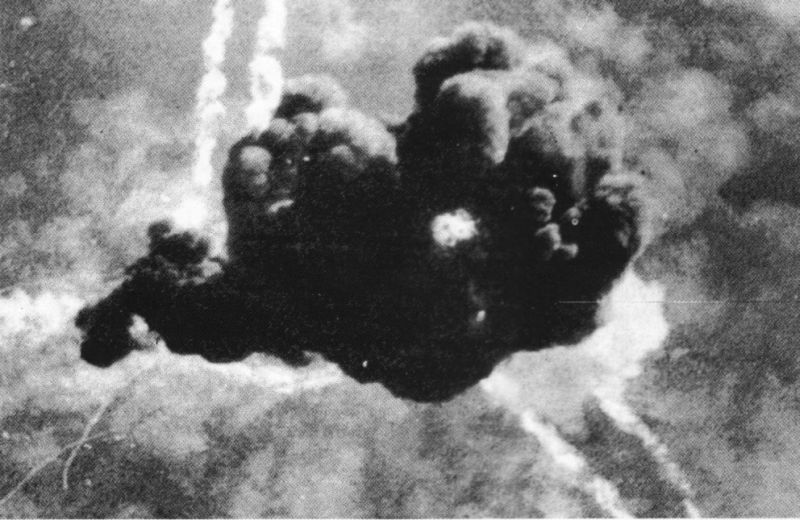
Flak (an abbreviation for Flugabwehrkanone, or Anti-aircraft Gun)
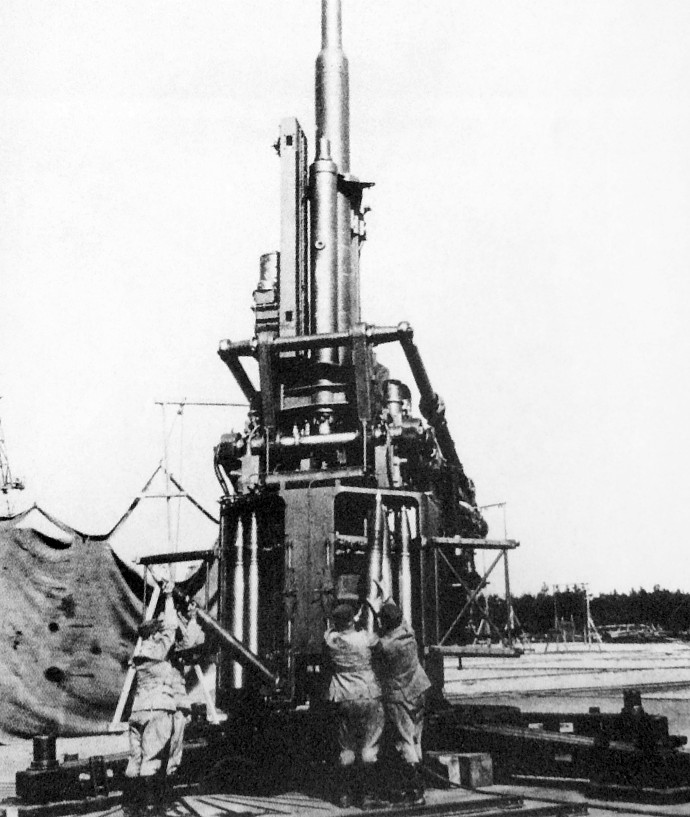
The essence of Air Defence is to detect Hostile Aircraft & Destroy them. The critical issue is to Hit a Target moving in 3-dimensional space; an Attack must not only match these 3-coordinates but must do so at the time the Target is at that Position. This means that Projectiles either have to be guided to hit the Target, or Aimed at the predicted Position of the Target at the time the Projectile reaches it, taking into account Speed & Direction of both the Target & the Projectile. The Germans developed massive reinforced-concrete Blockhouses, some more than 6-Storey high, which were known as Hochbunker “High Bunkers” or “Flaktürme” Flak Towers, on which they placed Anti-Aircraft Artillery.
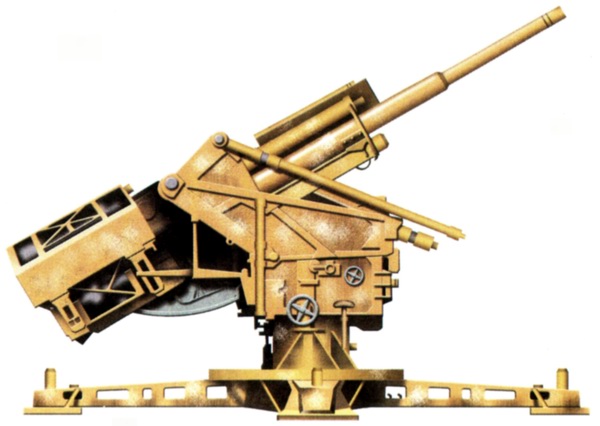
The initial Urban Flak Towers were actually Designed to take 4-Single 15-cm Guns of a Model which was never Approved for Service but was Tested. At least 4-different Designs were considered, this is the 150-mm Gerät 50 with on mount Autoloader refilled manually in-between Bursts, of the others less, is known as they were later & didn’t get as far. With a Weapon like this, a totally fixed position makes a bit of sense, for 128-mm, you could still Tow that if you wanted in 2-pieces & Railroad Cars provided ample Mobility for Defending Industrial Centres. Certainly more Mobility than a Gun on a Tower! The 150-mm Guns weighed more than Panzer IV Tanks & could never have been more than ‘re-Locatable’.

The Aircrews began calling the resulting Shells & Shell Fragments tearing through their Planes Flak. The Germans produced a Range of these including light, medium & heavy Artillery Pieces. The Artillery Ranged in size from 12.7 /128–mm Flak Guns. The Light & Medium Guns were used to protect German Field Armies as well as Facilities like important Bridges, Ports & Dams from Low-level Attack. The Heavy Batteries were used to Target the high-Altitude Strategic Bombers. The Germans by 1942 had installed over 15,000 – 88-mm Flak Guns. Flak Belts stretching across the Route into the Reich’s Industrial Heartland. They stretched from the Netherlands through Belgium & Western Germany. At some points, they were 20-Km thick. The Flak Batteries were an important part of the Kammhuber Line. The Germans had Radar directed Batteries & Searchlights to direct the Fire. There were also Flak Batteries installed around Major German Cities & High Priority Targets like Ploesti & U-Boat Facilities. Some Luftwaffe Analysts were dubious about the huge effort involved. It was very difficult to shoot down a Bomber. One Luftwaffe Study estimated it took over 3,300 – 88-mm Shells to successfully Shoot Down a Bomber. The Principal German Anti-Aircraft Weapon was the 88mm Artillery Piece. These Weapons were in great demand as early in the War it was discovered to be very effective against Tanks. Thus these Weapons were needed on the Eastern Front to stop the steadily increasing Red Army Armour Driving the Wehrmacht East. The Germans also began Deploying 128-mm Guns which were even more effective. The Luftwaffe deployed rectangular Formations of 40-AA Pieces in Grossbatterien able to deal Outbox Barrages. These Defences were manned by the diverse Personnel but included many Hitler Youth. The Total Effort was massive. Early in the War, the Luftwaffe Flak Units had about 1M-men. This was nearly 66% of the Total Luftwaffe Strength. Eventually, the Flak Personnel in 1944 approached 1.3M-people, including men, women & youth. Actual Luftwaffe Personnel were gradually replaced, often Deployed in Mobile Units. They were replaced by older men in the Home Guard, Reich Labour Service (RAD) Boys & HJ boys & girls. There was a variety of other Personnel involved, including Italian, Hungarian & Russian PoWs. (Italy & Hungary were NAZI Allies, but Germany Occupied Italy (1943) & Hungary (1944) when those Countries attempted to Leave the War. Women Auxiliaries were also involved. Some like the Hitler Youth Boys would have only been Employed within the Reich close to their Homes. We are not entirely sure who was manning the Guns in many available Images. Some show Youths in both Civilian Clothes & Wehrmacht Uniforms.
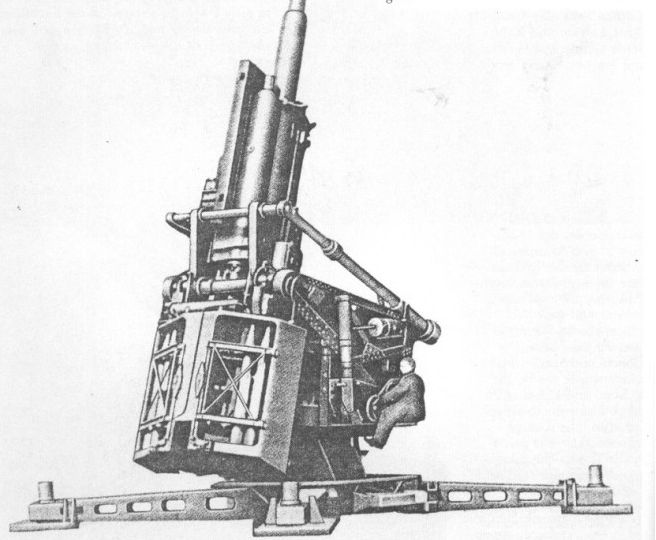
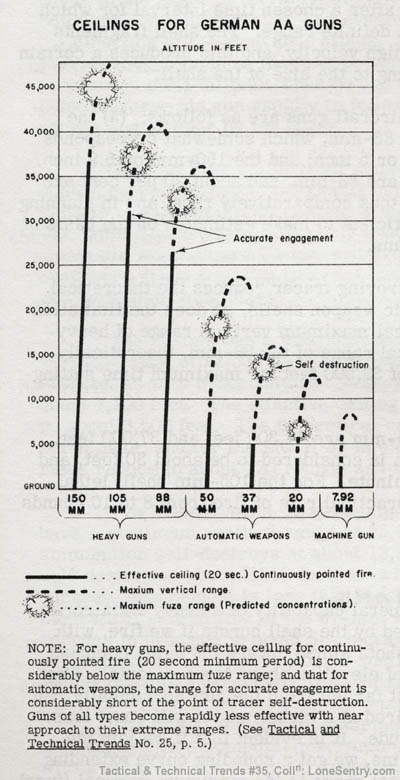
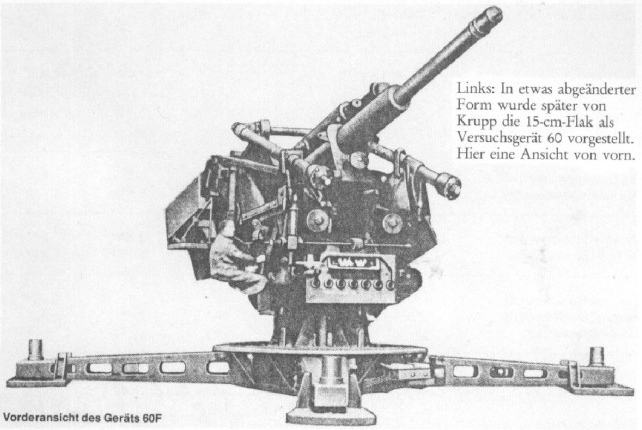
150-mm Flak Gerät 50, 55, 60, 60F
German Title: Gerät 50
Calibre: 149.1-mm
Barrel length: 7753 (L/52)
Rifled Barrel length: 6113-mm
Shipping Weight: 44,600 kg (Shipment in 4 parts)
Weight own Weapons (without Chassis): 32,000-kg
Bearing: -1°-30′ to +90°
Traverse: 360°
Muzzle-Velocity: 890M/s
Missile Weight: 40-kg
Range: 16,300M (53,465ft)
Rate of Fire: 10-Rounds per min, Manufacturer: Krupp AG, Essen
The Design was Commissioned as a backup project Rheinmetall (Gerät 55) in 1936. Work was Halted in January 1940.
Krupp Constructed 15-cm Gerät 60 from October 1942. It was further developed only as Stationary 15-cm Gerät 60F (fest – Fixed), with even higher performance. Gerät 60 could be Transported in accordance as one charge, for 2 x 3-Axle Trailer, Meiller Type Ammunition & fired from it, with a Mass of 42-g reached a Muzzle Velocity of 960-M/s. The Prototype Gerät 60F having upgraded Fire-control, which is externally very similar to Gerät 50, throwing up a Projectile at a Speed of 1200-M/s to a height of 18,000M (59,000-ft).c It had a Barrel with a Lifetime Calculated as 86 Shots. Further work on Anti-Aircraft Guns of 150-mm Calibre was Suspended in September 1943.
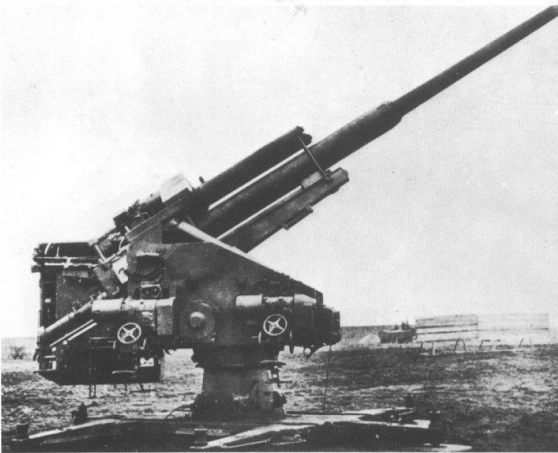
Heavy Anti-Aircraft Gun 150mm Gerät 55 was developed in the Company Rheinmetall based on a complex requirement in 1936 with the Companies Krupp & Rheinmetall. Prototypes were ready for Testing in September 1938 – it turned out that the growth in Performance & the likelihood of Destruction in comparison with Anti-Aircraft Guns of the Calibre 12.8-cm is insignificant & disproportionate to the increase in mass & size of the Weapon so that it did not justify the expenditure on their Production.
150-mm Gerät 55 Originated in a straight line from earlier Heavy Anti-aircraft Guns Rheinmetall, 105-mm Flak 38 & 128-mm Flak 40, being a virtually enlarged Version of the Latter. The Weapon rested on a Bed in a rectangular lower Bead Plate with 6-short tails – 2 fixed Longitudinal & 4-Folding to the Side. The Barrel was Guided to the Target by a Mechanism powered by Electric Motors with a variable Speed Hydraulic Gearbox – Pittler-Thoma – positioned on the right side of the Upper Bed, in an Emergency situation, it was possible to Operate the Gun manually with Double Cranks. The Fire Solutions used the Übertragungsgerät-Pointer-37. On the left side of the Upper Bed was Built at the Rear of the Ammunition Store with an Automatic Feeding Device, similar to these Prototypes 150-mm Gerät 55 was Transported in 3-Parts – the Base Platform, Bed & Barrel.
In 1940, due to insufficient Performance of existing Weapons both Companies were re-Commissioned, based on previous Work, to the Development of Cannons Calibre 15-cm, but with improved Performance – Projectile with a mass of 42-kg to reach had a Muzzle Velocity of 960-M/s & it has had to be transported without the need to break down for Parts. On the basis of these Specifications, Rheinmetall has Developed 15-cm Gerät 65, which on the basis of yet again changed Requirements from October 1942 was Developed further in a fixed 15-cm Gerät 65F (Fest – Fixed) capable of Firing Missiles with a Muzzle Velocity of 1200-M/s at the height of 18,000M (60,000-ft).
The Prototype Barrel to 150-mm Gerät 65 was ready in 1942, in August 1943 was completed & a Bed Prototype Gerät 65F. Further Work on the Calibre Anti-aircraft Guns of 150-mm was halted in September 1943 & existing Weapons were used only for Ballistic Testing. Conducted in 1941, Design Work on even Greater Anti-Aircraft Gun 240-mm Gerät 85 was Halted on 14th August 1943.
No German Ground Radar was accurate enough for Flak Fire Direction. The Operation method for Flak during the Day was to use the Radar to set the Optical Fire Control for the Flak onto the Target. Once acquired the Flak was Controlled by the Optical Equipment to complete the Engagement. During the Night the Radar would be used to indicate the Target to the Searchlight Crews. The rest of the Engagement would be carried out Optically. During the day Fighters would be directed with sufficient Precision that they would be able to see their Targets. During the Night they would use their onboard AI-Radar to find the Target after Initial Direction from the Ground-Based Radars.

From the time the Bomber Force Crossed the Enemy Coast & was running the Gauntlet down a Corridor of Searchlights through to the Target Area – we were able to observe a frightening spectacle as we approached. A number of Blue/White Master Beam Searchlights, Radar Cntrolled, it was said, moved across the Sky in Positive Movements. One would fasten onto an unfortunate Aircraft &d was immediately backed up by 4 or 5 White Searchlight Beams. Once ‘Coned‘ it was difficult to evade or slip away into the comparative safety of the Dark Night. Lumbering along at a steady 155-mph indicated Airspeed, now well into the Forest of Light-beams & hoping that we might have the Luck to sneak through. There was an almost Audible Click as a Blue-beam locked onto our Aircraft and the Cone was immediately completed as the White Slave Beams swung into position. A White void held our Aircraft Suspended, Vulnerable & Helpless. Inside the Plane everywhere was a blinding Glare, picking out Rivets, Scraps of Aluminium, shiny where Paint had worn off, every nook & cranny not noticed before, all seen in an Instant of Time. Shoot down the Beams – but where was down, where were the Searchlight Batteries? The rest of the Crew experienced a momentary Shock. The sudden change from the comparative safety of Darkness to the total exposure in a Light too bright to look at was a Physical Blow. It was however but a split second in time before the survival Instinct surfaced. “Hang on everybody. We’re going to Corkscrew Down!”
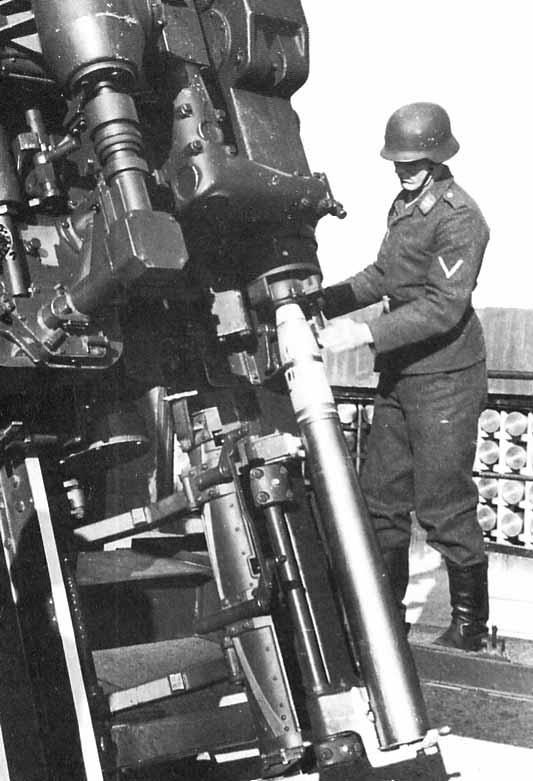
The Bomber Pilots were aware that the Flak Gunners had a difficult time determining their exact Altitude. They made Adjustments accordingly:
“Bomb-Release Altitude was briefed for 11,800-ft. We would lose Altitude randomly”, 100-ft, 300-ft, 200-ft to make it harder for the Flak Batteries to Fuse their 88-mm Shells precisely. Our only Lateral Evasive Action came from the slight corrections the Lead Bomb Aimer fed into his Norden Bombsight. The Tops of the cumulus Clouds were almost at our Altitude & coverage was about 5/10ths. I thought getting the Crosshairs on the Target might be a problem for the Bomb Aimers, but seconds later, the Bombs dropped from the Bellies of the Lead group and they turned to the Right in a steep Diving Turn. Soot-black clusters of Flak Mushroomed over the Stream, but the young Luftwaffenhelfer below had waited too long, and our Aircraft were out of Harm’s way. “
